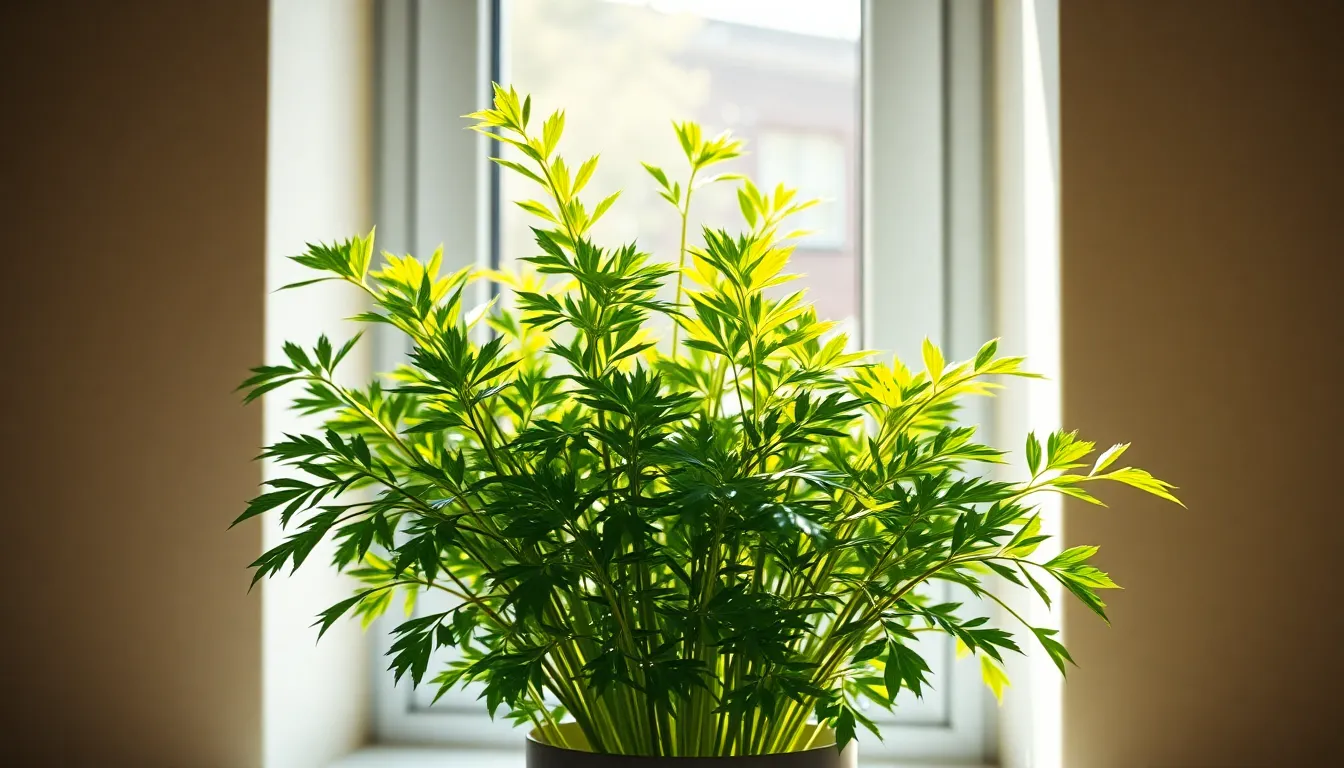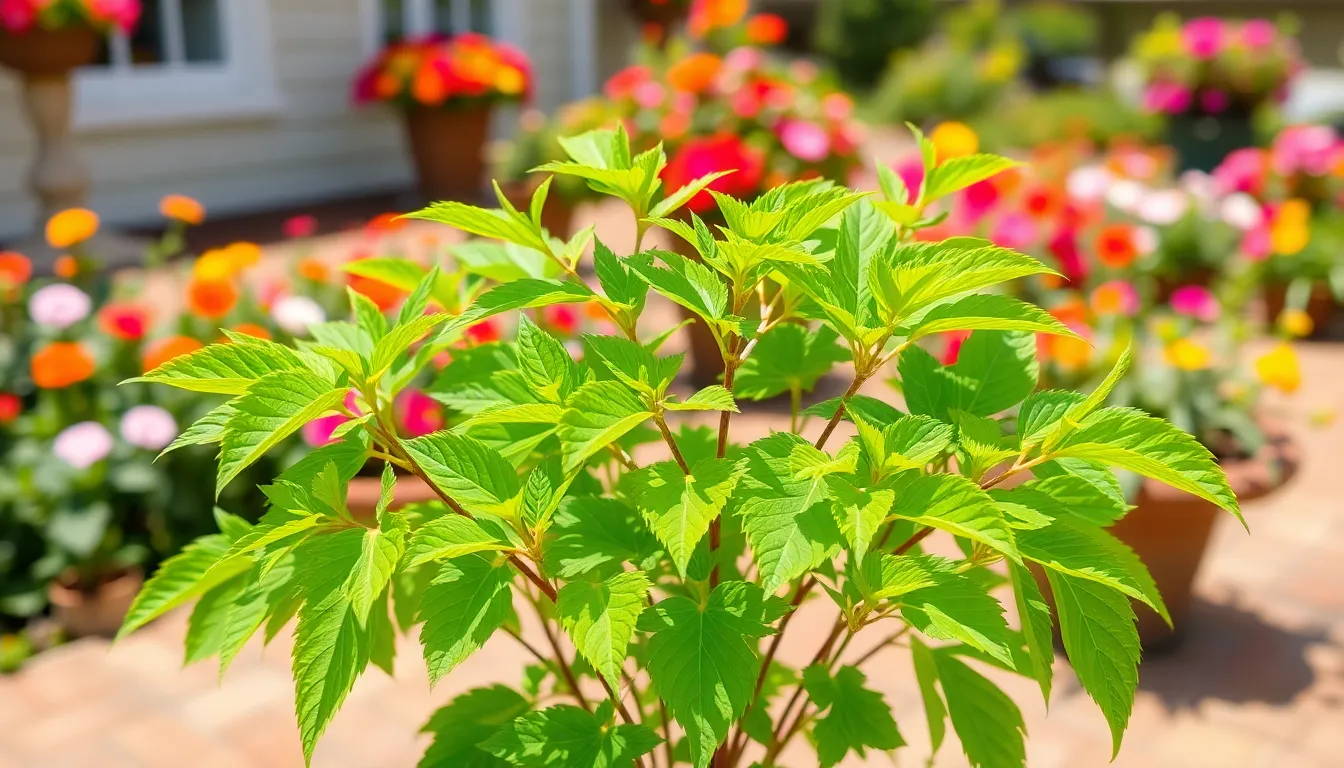If you’ve ever wished for a natural way to keep pesky mosquitoes at bay while adding a splash of greenery to your space, the citronella plant is your new best friend. This fragrant powerhouse not only helps repel those annoying bugs but also brightens up any garden or patio. Who knew pest control could come with a side of style?
How to Care for Citronella Plant
Citronella plants serve as a favored option for gardening enthusiasts. With their vibrant foliage and multiple benefits, these plants significantly enhance outdoor spaces.
What Is a Citronella Plant?
Citronella plants, scientifically known as Cymbopogon nardus, thrive in warm climates. These perennial grasses are well-known for their strong lemon scent. Typically, they grow up to three to five feet tall and produce clumps of narrow leaves. Backyard gardeners often cultivate them for their natural insect-repellent properties. While they are commonly used in the production of mosquito-repelling oils, their aromatic attributes also enrich gardens.
Benefits of Growing Citronella
Growing citronella offers numerous advantages for gardeners. First, these plants provide effective mosquito protection, reducing pest activity in outdoor areas. Second, they contribute to the overall aesthetics of gardens with their lush green foliage. Third, citronella plants are relatively low-maintenance, requiring minimal care. Fourth, in addition to repelling bugs, they can also attract beneficial pollinators like bees and butterflies. Finally, citronella can enhance culinary endeavors; leaves can be infused into drinks or used as flavoring. Overall, these benefits make citronella plants a valuable addition to any garden.
Ideal Growing Conditions

Citronella plants thrive under specific conditions that enhance their growth while contributing to their mosquito-repelling properties.
Sunlight Requirements
Full sun exposure is essential for optimal growth. Six to eight hours of direct sunlight each day maximizes the citronella plant’s health. While some shade can be tolerated, ample sunlight encourages stronger, more aromatic foliage. It’s best to place the plant in a south-facing area, ensuring it receives unobstructed light. If grown indoors, a brightly lit windowsill promotes well-being and vitality.
Soil Preferences
Well-draining soil contributes significantly to the health of citronella plants. A pH level between 6.0 and 7.0 works best, providing a slightly acidic to neutral environment. Loamy soil with organic matter enhances drainage and nutrient retention. Amending the soil with compost or peat moss supports root development and improves moisture retention. Poorly draining or compacted soil can lead to root rot, so maintaining aeration is crucial.
Watering and Fertilization
Caring for a citronella plant requires attention to its watering and fertilization needs for optimal growth. This plant thrives with appropriate moisture and nutrient levels.
How Much Water Does It Need?
Citronella plants prefer consistently moist soil but not waterlogged conditions. Watering them once a week during the growing season generally suffices; however, environmental conditions can dictate frequency. Checking the soil’s moisture level helps determine when to water. If the top inch of soil is dry, it’s time to provide water. Overwatering can lead to root rot, so always ensure proper drainage for healthy growth.
Best Fertilizers for Citronella
Using balanced, slow-release fertilizers promotes robust growth in citronella plants. Fertilizers with an NPK ratio of 10-10-10 or 14-14-14 work effectively. Applying fertilizer every six to eight weeks during the growing season supports plant health. Organic options, such as compost or aged manure, supply essential nutrients while enhancing soil structure. Regular fertilization strengthens plants, ensuring they produce lush foliage and aromatic oils.
Pruning and Maintenance
Pruning and maintenance are crucial for the healthy growth of citronella plants. Proper care keeps these plants lush and vibrant.
When to Prune Citronella Plants
Pruning should occur in early spring before new growth begins. Once danger of frost passes, this timing encourages healthy new leaves. Late summer also provides an opportunity to trim back any overgrowth while allowing time for recovery before cooler temperatures. Plants benefit from light pruning throughout the growing season to remove any dead or damaged leaves. Noticing changes in the plant’s appearance signals it’s time for a trim to maintain its shape.
Techniques for Effective Pruning
For effective pruning, use sharp, clean shears to prevent damage and infection. Cutting back stems to just above the leaf nodes encourages bushier growth. Take care to remove only about one-third of the plant at a time to avoid shock. Discard any debris around the base to prevent pest infestations. Regularly check for signs of disease or insects, ensuring all affected areas are promptly removed. Applying a balanced fertilizer post-pruning supports regrowth and keeps the plant healthy. Following these steps ensures a thriving citronella plant for years to come.
Common Pests and Diseases
Citronella plants can attract various pests and diseases. Recognizing these threats helps maintain plant health.
Identifying Pests
Aphids, spider mites, and whiteflies frequently target citronella plants. Look for yellowing leaves or tiny webs near leaf surfaces, signs of spider mites. Sticky residue indicates aphid presence, while small flying insects signify a whitefly infestation. Regularly inspecting leaves and stems aids early detection. Any discoloration or distortion of leaves warrants closer observation for potential pests.
Treatment Options
Addressing pest issues requires a few straightforward strategies. Insecticidal soap effectively eliminates soft-bodied pests like aphids. Neem oil offers both preventative and curative benefits for various insects. Rinsing plants with a strong water spray removes pests and their eggs. Maintaining plant health through proper watering and fertilization strengthens resistance against disease and infestations. Encouraging beneficial insects, such as ladybugs, naturally controls pest populations.
Conclusion
Caring for a citronella plant can be both rewarding and beneficial. With its mosquito-repelling properties and vibrant appearance, it serves as an excellent addition to any garden or patio. By providing the right amount of sunlight, water, and nutrients, anyone can cultivate a healthy and thriving plant.
Regular pruning and monitoring for pests will ensure the plant remains robust and productive. With a little attention and care, the citronella plant not only enhances outdoor spaces but also contributes to a more enjoyable and bug-free environment. Embracing this natural solution allows for a harmonious blend of beauty and functionality in home gardens.

